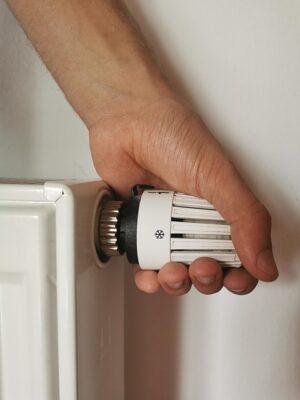Commercial air curtain heaters are advanced heating solutions for maintaining optimal temperatures in various business settings, from retail stores to warehouses. Rated by power outputs in watts or BTUs, higher ratings indicate stronger heating capabilities. Selection should consider space size, climate, and energy efficiency goals, making them an efficient choice to reduce energy consumption. These heaters use precise air curtain technology to create comfortable environments while being ideal for applications like commercial entrances, food service establishments, and industrial facilities. Efficient rating data collection through NLP and NER aids in strategic decisions, optimizing performance, and reducing operational costs.
Commercial air curtain heaters are essential for temperature control in various settings, but understanding their capacity ratings can be challenging. This article explores named entity extraction (NEE) as a powerful tool to uncover and analyze these crucial specifications. We’ll delve into the significance of NEE in product analysis, its techniques, benefits, and best practices specifically tailored to commercial air curtain heaters. Unlocking this data enhances decision-making for businesses seeking efficient heating solutions.
- Understanding Commercial Air Curtain Heaters and Their Ratings
- The Role of Named Entity Extraction in Product Analysis
- Techniques for Accurately Extracting Capacity Ratings
- Benefits of Efficient Rating Data Collection
- Best Practices for Implementing Named Entity Extraction
Understanding Commercial Air Curtain Heaters and Their Ratings

Commercial air curtain heaters are specialized devices designed to provide efficient and targeted heating solutions for various commercial spaces. These heaters utilize advanced air curtain technology to create a barrier of heated air, effectively preventing cold drafts from entering and maintaining optimal indoor temperatures. By focusing the heat where it’s needed most—typically at entrances and passageways—they offer both comfort and energy efficiency.
Ratings play a crucial role in understanding these commercial heating systems. Manufacturer-provided specifications detail power outputs, which are measured in watts or BTUs (British Thermal Units). Higher ratings indicate stronger heating capabilities, suitable for larger areas like warehouses, retail stores, and industrial facilities. When selecting a commercial air curtain heater, considering the specific size of your entrance, the climate conditions in your region, and your energy efficiency goals is essential. Air curtain technology’s effectiveness in door heating systems makes it an efficient choice for maintaining comfortable environments while reducing overall energy consumption.
The Role of Named Entity Extraction in Product Analysis

Techniques for Accurately Extracting Capacity Ratings

Accurately extracting capacity ratings from product descriptions or technical documents for commercial air curtain heaters requires a multifaceted approach. One effective technique involves using Natural Language Processing (NLP) algorithms to parse and understand text, identifying keywords related to heating power and performance metrics. By training models on large datasets of similar products, these algorithms can learn to recognize patterns specific to commercial air curtain heaters, ensuring precise extraction of capacity ratings.
Additionally, leveraging structured data and semantic analysis enhances the accuracy of this process. Incorporating standardized formats for product specifications, such as units of measurement (e.g., watts or BTUs) and industry-specific terms related to heating capacity, allows for more consistent and reliable extraction. This, coupled with advanced text mining techniques, enables a comprehensive understanding of the heater’s performance capabilities, catering to diverse needs in commercial entrance heating, door heating systems, warehouse entrance heating, and retail store heating applications through energy-efficient air curtain technology.
Benefits of Efficient Rating Data Collection

Efficient rating data collection for commercial air curtain heaters offers a multitude of benefits, enhancing overall operational effectiveness and sustainability. By accurately capturing and analyzing capacity ratings, businesses can make informed decisions about their heating systems, ensuring optimal performance and energy efficiency. This process allows for the identification of high-performing models, facilitating wise investments in door heating systems.
Moreover, such data collection supports the implementation of advanced air curtain technology, which plays a crucial role in entrance climate control. Commercial entrance heating applications can significantly reduce energy consumption by employing industrial air barriers and heated air curtains. This not only minimizes operational costs but also contributes to a greener environment, making it an essential aspect for any forward-thinking organization, especially in retail stores and warehouses where efficient temperature management is paramount.
Best Practices for Implementing Named Entity Extraction

Implementing Named Entity Extraction (NER) for commercial air curtain heaters involves best practices that ensure accuracy and efficiency. Firstly, define clear entity types relevant to your context, such as “commercial air curtain heater” models, manufacturers, capacity ratings, and energy efficiency levels. Training data should be diverse and representative of real-world usage, including various brands, specifications, and applications like warehouse entrance heating or retail store climate control.
Secondly, leverage pre-trained NER models tailored for industrial and commercial settings, enhancing speed and performance. Regularly update and fine-tune these models with new data to capture emerging trends and technologies in air curtain technology, door heating systems, and energy-efficient heating solutions. Additionally, integrate extracted entities into your system for automated reporting, comparison, and recommendation of suitable commercial entrance heating or warehouse entrance heating options based on user queries.
Named entity extraction (NEE) plays a pivotal role in understanding and analyzing commercial air curtain heaters by efficiently extracting their capacity ratings. This technology ensures accurate data collection, enabling better decision-making for businesses. By implementing NEE best practices, companies can streamline their product analysis, gain valuable insights from rating data, and ultimately enhance their market competitiveness with informed choices regarding commercial air curtain heaters.






